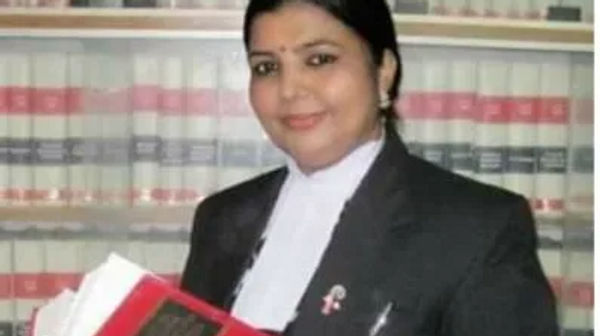Advocate Ranjana Agnihotri is a known face in Allahabad High Court’s Lukhnow bench. She was a counsel in the Ram Janmabhoomi title suit. For her, that was much more than a case. Following the last year’s judgment of the Supreme Court, construction of the Ram temple in Ayodhya has begun.
Agnihotri says, a day after the apex court pronounced its judgement in Ram Janmabhoomi’s case, she started preparing for the Krishna Janmabhoomi case.
A Mathura court has admitted the plea seeking the removal of the Idgah mosque situated adjacent to the Lord Krishna temple complex in the city. The petitioners have further demanded the ownership of the 13.37-acre land.
Agnihotri is one of the petitioners in the case. In an exclusive interview with Opoyi, she explained the intricacies of the case.
Opoyi: It is said that while the Ram Janmabhoomi was still a case, Krishna Janmabhoomi is not. The temple and mosque are separate in this case. Can you explain the case in detail?
Ranjana Agnihotri: This case is simpler. In 1618, in the town of Orchha, ruler Veer Singh Bundel spent Rs 33 lakh on this land for the construction of the Krishna temple.
Aurangzeb assumed the Mughal throne on July 30, 1658. In 1669, he ordered for the temple to be razed and asked for the idols to be used in the staircase of the mosque. This was so that those who visit the mosque would step over the idols.
We have submitted a copy of the decree in the court. It is there in a book by historian Jadunath Sarkar. The Hyderabad museum too has a copy of the official decree.
Opoyi: If Aurangzeb had razed the temple, how are the temple and the mosque adjacent to each other, at present?
Ranjana Agnihotri: On April 7, 1770, a ‘Govardhan War’ was fought between the Maratha army and that of Aurangzeb in which the latter was defeated badly. A structure built by Aurangzeb was also razed by the Marathas.
In 1803, the East India Company declared the land as public property and auctioned the 13.37-acre land in 1815. At that time, Raja Patnimal of Benares bought the land.
A settlement map was prepared in 1860 and the land was named after Katra Keshav Dev.
Raja Patnimal wanted to build a Krishna temple but it could be done due to the ruler’s death.
After that, Jugal Kishore Birla bought the land for Rs 13,400. Its sale deed was done in the name of Bharat Ratna Madan Mohan Malviya.
Opoyi: What is the role of trust in this? There are reports on conflicts.
Ranjana Agnihotri: Jugal Kishore Birla formed the Sri Krishna Janmabhoomi trust on February 21, 1951. On January 21, 1953, a few people formed a new trust called Sri Krishna Janma Seva Sansthan. It filed a case with the people associated with the Idgah mosque.
Meanwhile, Jugal Kishore Birla died.
In 1968, the two filed a case following a compromise and got a fake decree. Out of the 13.77-acre land, they were given two-and-a-half bigha (a traditional unit of measurement of the area of land). They were given half of the land where Lord Krishna was born. This is how the mosque was built.
Opoyi: Why do you think your case is strong?
Ranjana Agnihotri: The case is linked to the religious feelings of Hindus. It is strong legally, as well. The other party got a fake decree from the court. The Supreme Court has said if one is found guilty of fake conduct, it can be challenged and the decree can be canceled.
The district court has admitted our plea and has questioned them over encroachment.
Opoyi: In this case, what do you want from the court?
Ranjana Agnihotri: This is a question of the faith of Hindus. This was done in the wrong way. The mosque should be removed. It’s the birthplace of Lord Krishna.
Opoyi: Is it true that this isn’t just a case for you?
Ranjana Agnihotri: Yes, this is linked to our faith. We are fighting for the dream of Madan Mohan Malviya, that he saw for the pride of the Indians.
Opoyi: You are fighting over a sensitive issue? Have you ever felt threatened or scared?
Ranjana Agnihotri: We’ll talk about the threats that I get on some other day. On being afraid, I never feel scared as I’ve dedicated my life to my faith and the nation.






